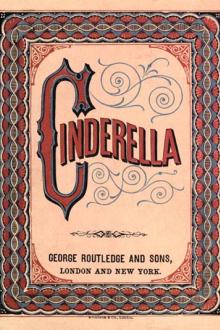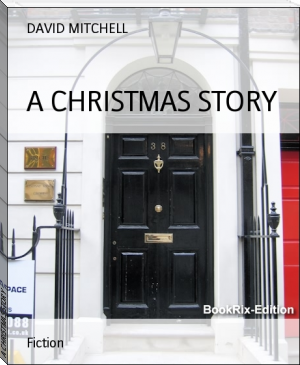The Return of Sherlock Holmes by Arthur Conan Doyle (booksvooks txt) 📕

Read free book «The Return of Sherlock Holmes by Arthur Conan Doyle (booksvooks txt) 📕» - read online or download for free at americanlibrarybooks.com
- Author: Arthur Conan Doyle
Read book online «The Return of Sherlock Holmes by Arthur Conan Doyle (booksvooks txt) 📕». Author - Arthur Conan Doyle
Holmes thought for a little and then a curious smile played over his face.
“Saddle a horse, my lad,” said he. “I shall wish you to take a note to Elrige's Farm.”
He took from his pocket the various slips of the dancing men. With these in front of him he worked for some time at the study-table. Finally he handed a note to the boy, with directions to put it into the hands of the person to whom it was addressed, and especially to answer no questions of any sort which might be put to him. I saw the outside of the note, addressed in straggling, irregular characters, very unlike Holmes's usual precise hand. It was consigned to Mr. Abe Slaney, Elrige's Farm, East Ruston, Norfolk.
“I think, inspector,” Holmes remarked, “that you would do well to telegraph for an escort, as, if my calculations prove to be correct, you may have a particularly dangerous prisoner to convey to the county gaol. The boy who takes this note could no doubt forward your telegram. If there is an afternoon train to town, Watson, I think we should do well to take it, as I have a chemical analysis of some interest to finish, and this investigation draws rapidly to a close.”
When the youth had been dispatched with the note, Sherlock Holmes gave his instructions to the servants. If any visitor were to call asking for Mrs. Hilton Cubitt no information should be given as to her condition, but he was to be shown at once into the drawing-room. He impressed these points upon them with the utmost earnestness. Finally he led the way into the drawing-room with the remark that the business was now out of our hands, and that we must while away the time as best we might until we could see what was in store for us. The doctor had departed to his patients, and only the inspector and myself remained.
“I think that I can help you to pass an hour in an interesting and profitable manner,” said Holmes, drawing his chair up to the table and spreading out in front of him the various papers upon which were recorded the antics of the dancing men. “As to you, friend Watson, I owe you every atonement for having allowed your natural curiosity to remain so long unsatisfied. To you, inspector, the whole incident may appeal as a remarkable professional study. I must tell you first of all the interesting circumstances connected with the previous consultations which Mr. Hilton Cubitt has had with me in Baker Street.” He then shortly recapitulated the facts which have already been recorded. “I have here in front of me these singular productions, at which one might smile had they not proved themselves to be the fore-runners of so terrible a tragedy. I am fairly familiar with all forms of secret writings, and am myself the author of a trifling monograph upon the subject, in which I analyze one hundred and sixty separate ciphers; but I confess that this is entirely new to me. The object of those who invented the system has apparently been to conceal that these characters convey a message, and to give the idea that they are the mere random sketches of children.
“Having once recognised, however, that the symbols stood for letters, and having applied the rules which guide us in all forms of secret writings, the solution was easy enough. The first message submitted to me was so short that it was impossible for me to do more than to say with some confidence that the symbol XXX stood for E. As you are aware, E is the most common letter in the English alphabet, and it predominates to so marked an extent that even in a short sentence one would expect to find it most often. Out of fifteen symbols in the first message four were the same, so it was reasonable to set this down as E. It is true that in some cases the figure was bearing a flag and in some cases not, but it was probable from the way in which the flags were distributed that they were used to break the sentence up into words. I accepted this as a hypothesis, and noted that E was represented by XXX.
“But now came the real difficulty of the inquiry. The order of the English letters after E is by no means well marked, and any preponderance which may be shown in an average of a printed sheet may be reversed in a single short sentence. Speaking roughly, T, A, O, I, N, S, H, R, D, and L are the numerical order in which letters occur; but T, A, O, and I are very nearly abreast of each other, and it would be an endless task to try each combination until a meaning was arrived at. I, therefore, waited for fresh material. In my second interview with Mr. Hilton Cubitt he was able to give me two other short sentences and one message, which appeared—since there was no flag—to be a single word. Here are the symbols. Now, in the single word I have already got the two E's coming second and fourth in a word of five letters. It might be 'sever,' or 'lever,' or 'never.' There can be no question that the latter as a reply to an appeal is far the most probable, and the circumstances pointed to its being a reply written by the lady. Accepting it as correct, we are now able to say that the symbols XXX stand respectively for N, V, and R.
“Even now I was in considerable difficulty, but a happy thought put me in possession of several other letters. It occurred to me that if these appeals came, as I expected, from someone who had been intimate with the lady in her early life, a combination which contained two E's with three letters between might very well stand for the name 'ELSIE.' On examination I found that such a combination formed the termination of the message which was three times repeated. It was certainly some appeal to 'Elsie.' In this way I had got my L, S, and I. But what appeal could it be? There were only four letters in the word which preceded 'Elsie,' and it ended in E. Surely the word must be 'COME.' I tried all other four letters ending in E, but could find none to fit the case. So now I was in possession of C, O, and M, and I was in a position to attack the first message once more, dividing it into words and putting dots for each symbol which was still unknown. So treated it worked out in this fashion:—
.M .ERE ..E SL.NE.“Now the first letter CAN only be A, which is a most useful discovery, since it occurs no fewer than three times in this short sentence, and the H is also apparent in the second word. Now it becomes:—
AM HERE A.E SLANE.Or, filling in the obvious vacancies in the name:—
AM HERE ABE SLANEY.I had so many letters now that I could proceed with considerable confidence to the second message, which worked out in this fashion:—
A. ELRI.ES.Here I could only make sense by putting T and G for the missing letters, and supposing that the name was that of some house or inn at which the writer was staying.”
Inspector Martin and I had listened with the utmost interest to the full and clear account of how my friend had produced results which had led to so complete a command over our difficulties.
“What did you do then, sir?” asked the inspector.
“I had every reason to suppose that this Abe Slaney was an American, since Abe is an





Comments (0)